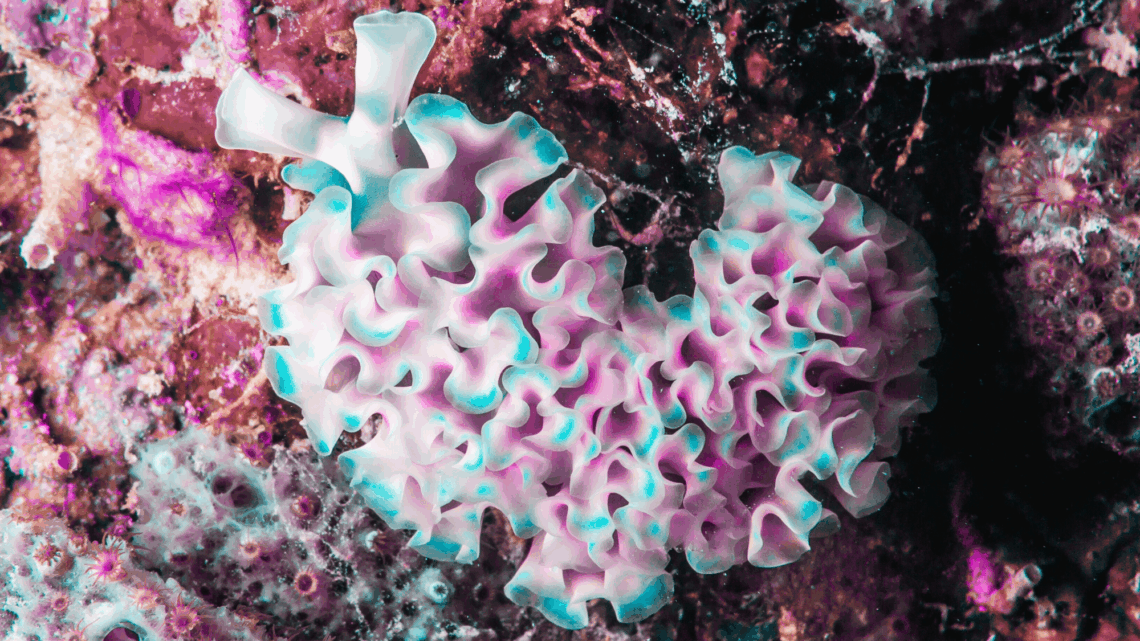Somewhere between salad and an alien lies the lettuce sea slug, or Elysia crispata, a creature that eats algae and steals its powers. This odd marine…thing has evolved the truly bonkers ability to steal chloroplasts from the algae it munches on, keeps them alive, and uses them to photosynthesize. It’s a slug that converts sunshine into food like a plant.
Researchers have known about these photosynthetic slugs for a while, but how they did it remained a mystery. Publishing their findings in Cell, a team of Harvard biologists has finally figured it out.
Instead of digesting the algae’s chloroplasts like any respectable organism would, the slug stashes them in little intestinal sacs lined with protective membranes called kleptosomes. These sacs keep the chloroplasts functioning as if the slug had never chewed and began digesting the plant the chloroplasts once called home.
From there, the stolen organelles are moved to the sea slug’s frilly back, where they can soak up the sun and keep the slug fed without actual food for extended stretches.
Chemical analysis showed that these chloroplasts are still generating proteins and, somehow, now contain slug proteins too.
These sea slugs are constantly changing color depending on their food situation, like a hunger-based mood ring. Healthy and well-fed, they glow green. If they’re hungry, they fade to orange, probably because they start digesting their chloroplast reserves when food sources are low, sapping the green they provide.
These chloroplasts provide a variety of uses, including emergency rations, as demonstrated above, they can help the slugs camouflage amongst other leafy greens, or it can act as a chemical deterrent to predators who thought they were taking a bite out of a delicious juicy meaty slug but instead got some kind of gross plant thing.
Solar-powdered sea slugs, man. Mother Nature’s engineering department is really at the top of its game.
The post This Sea Slug Becomes Solar-Powered When It Eats Algae appeared first on VICE.




